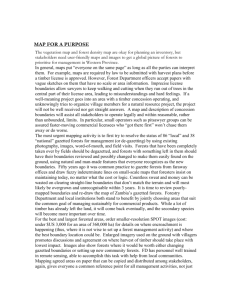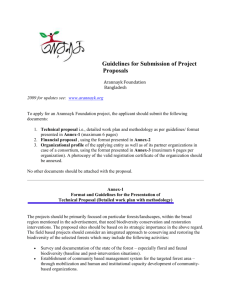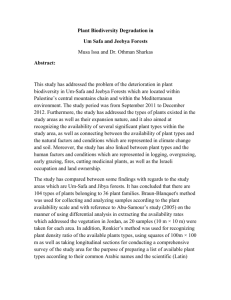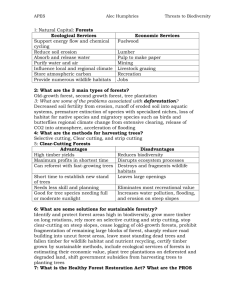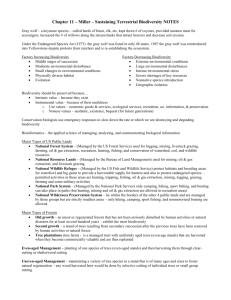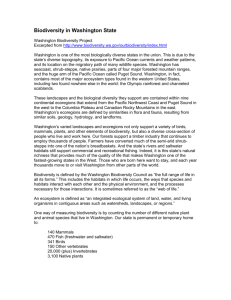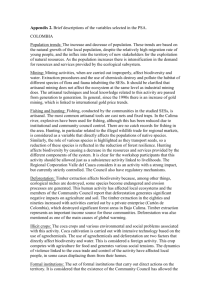Abstract of paper entitled “
advertisement
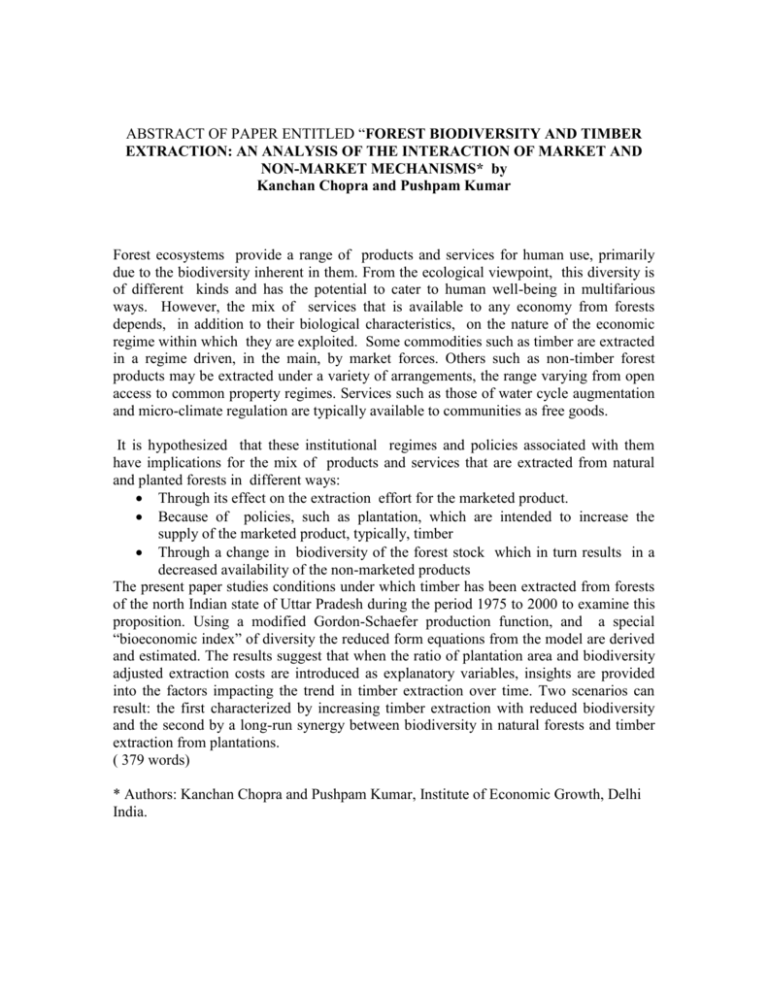
ABSTRACT OF PAPER ENTITLED “FOREST BIODIVERSITY AND TIMBER EXTRACTION: AN ANALYSIS OF THE INTERACTION OF MARKET AND NON-MARKET MECHANISMS* by Kanchan Chopra and Pushpam Kumar Forest ecosystems provide a range of products and services for human use, primarily due to the biodiversity inherent in them. From the ecological viewpoint, this diversity is of different kinds and has the potential to cater to human well-being in multifarious ways. However, the mix of services that is available to any economy from forests depends, in addition to their biological characteristics, on the nature of the economic regime within which they are exploited. Some commodities such as timber are extracted in a regime driven, in the main, by market forces. Others such as non-timber forest products may be extracted under a variety of arrangements, the range varying from open access to common property regimes. Services such as those of water cycle augmentation and micro-climate regulation are typically available to communities as free goods. It is hypothesized that these institutional regimes and policies associated with them have implications for the mix of products and services that are extracted from natural and planted forests in different ways: Through its effect on the extraction effort for the marketed product. Because of policies, such as plantation, which are intended to increase the supply of the marketed product, typically, timber Through a change in biodiversity of the forest stock which in turn results in a decreased availability of the non-marketed products The present paper studies conditions under which timber has been extracted from forests of the north Indian state of Uttar Pradesh during the period 1975 to 2000 to examine this proposition. Using a modified Gordon-Schaefer production function, and a special “bioeconomic index” of diversity the reduced form equations from the model are derived and estimated. The results suggest that when the ratio of plantation area and biodiversity adjusted extraction costs are introduced as explanatory variables, insights are provided into the factors impacting the trend in timber extraction over time. Two scenarios can result: the first characterized by increasing timber extraction with reduced biodiversity and the second by a long-run synergy between biodiversity in natural forests and timber extraction from plantations. ( 379 words) * Authors: Kanchan Chopra and Pushpam Kumar, Institute of Economic Growth, Delhi India.
